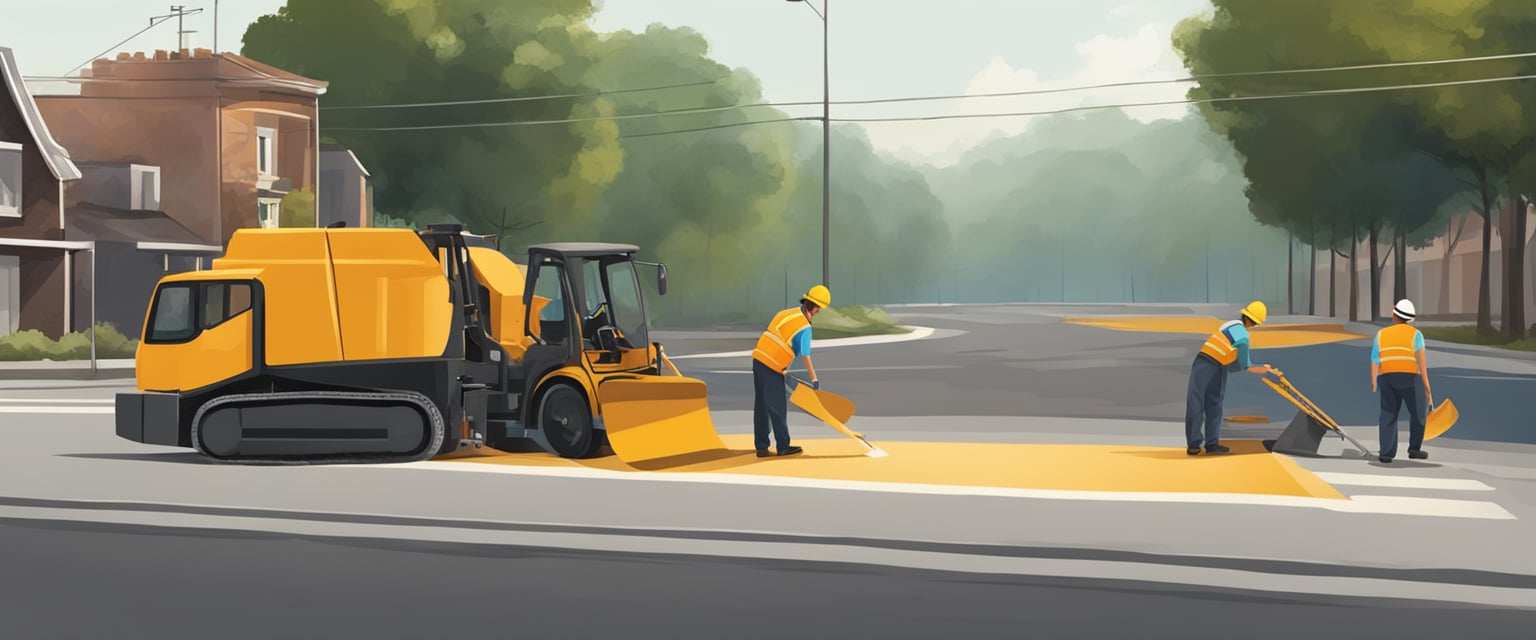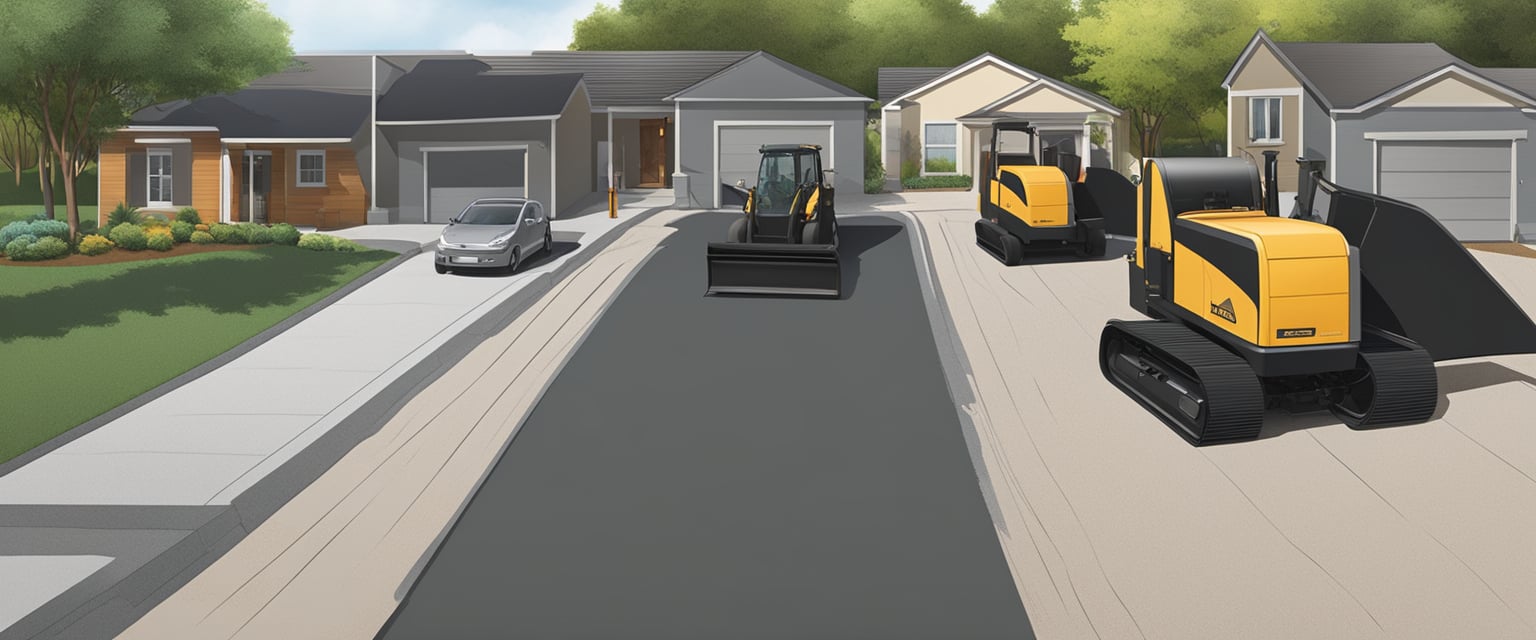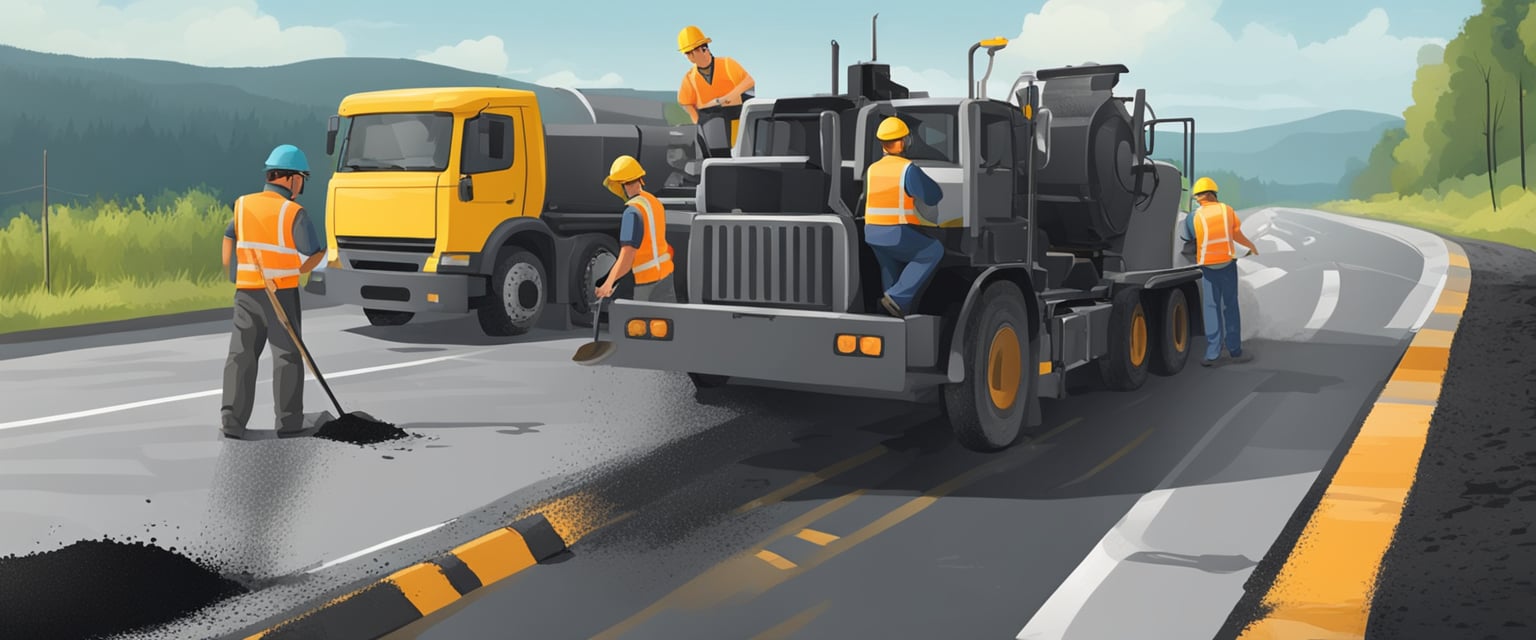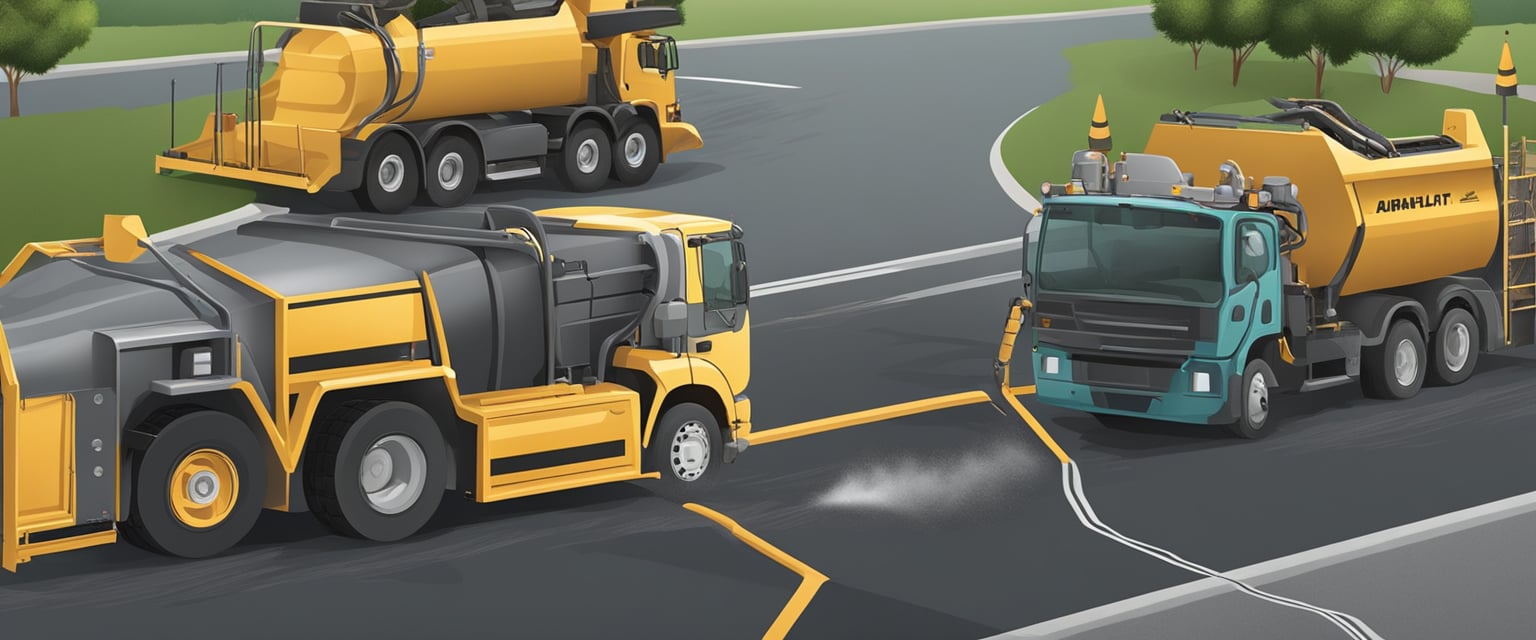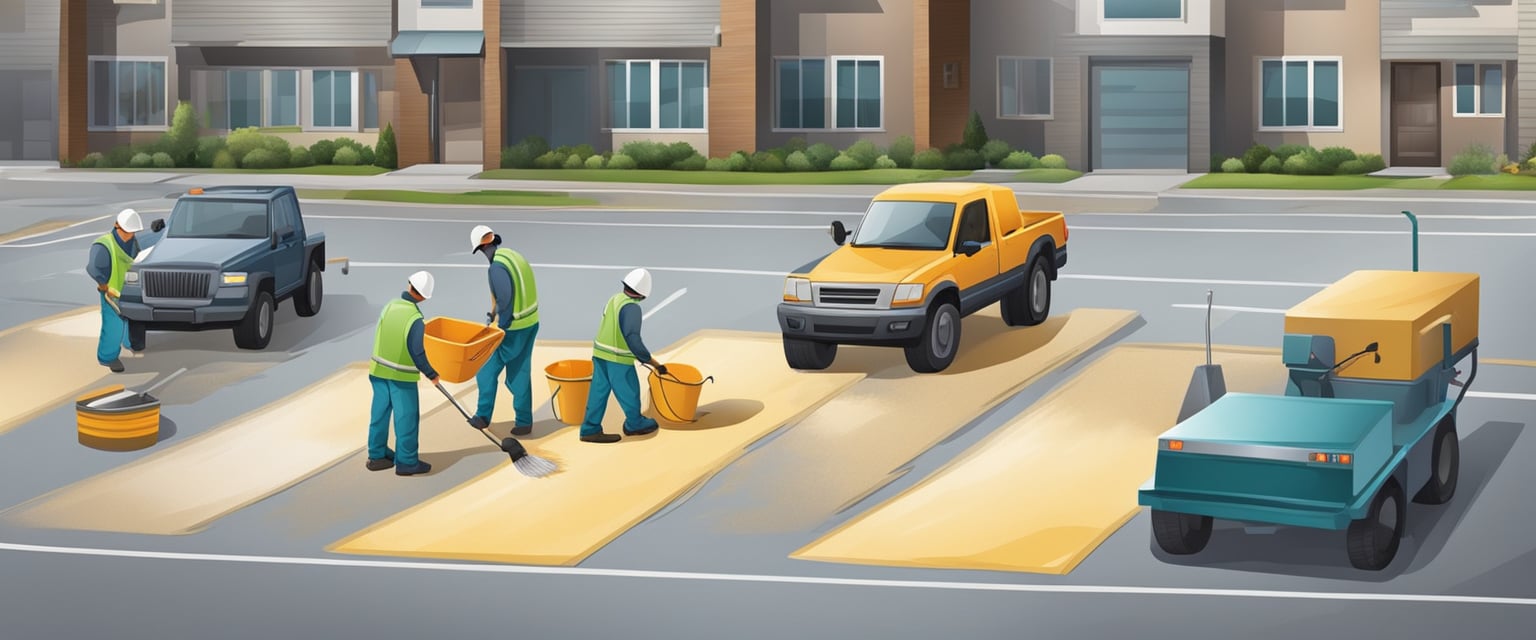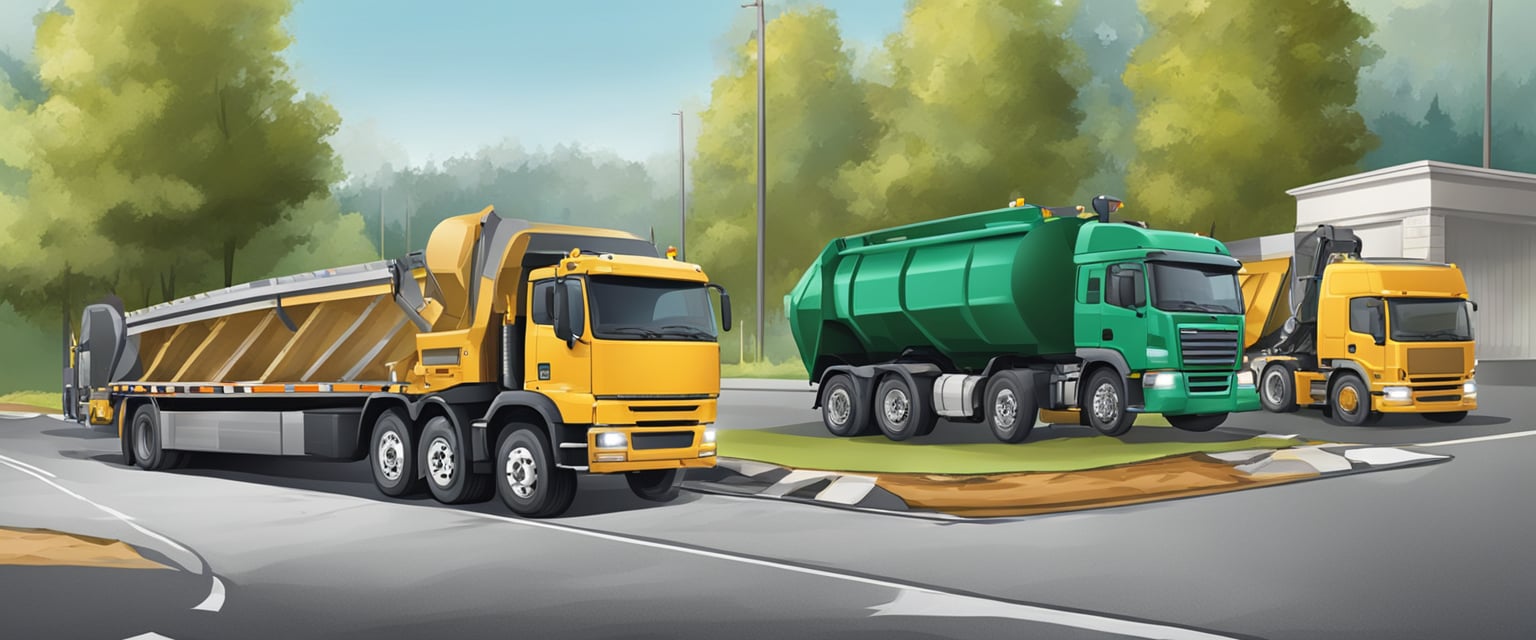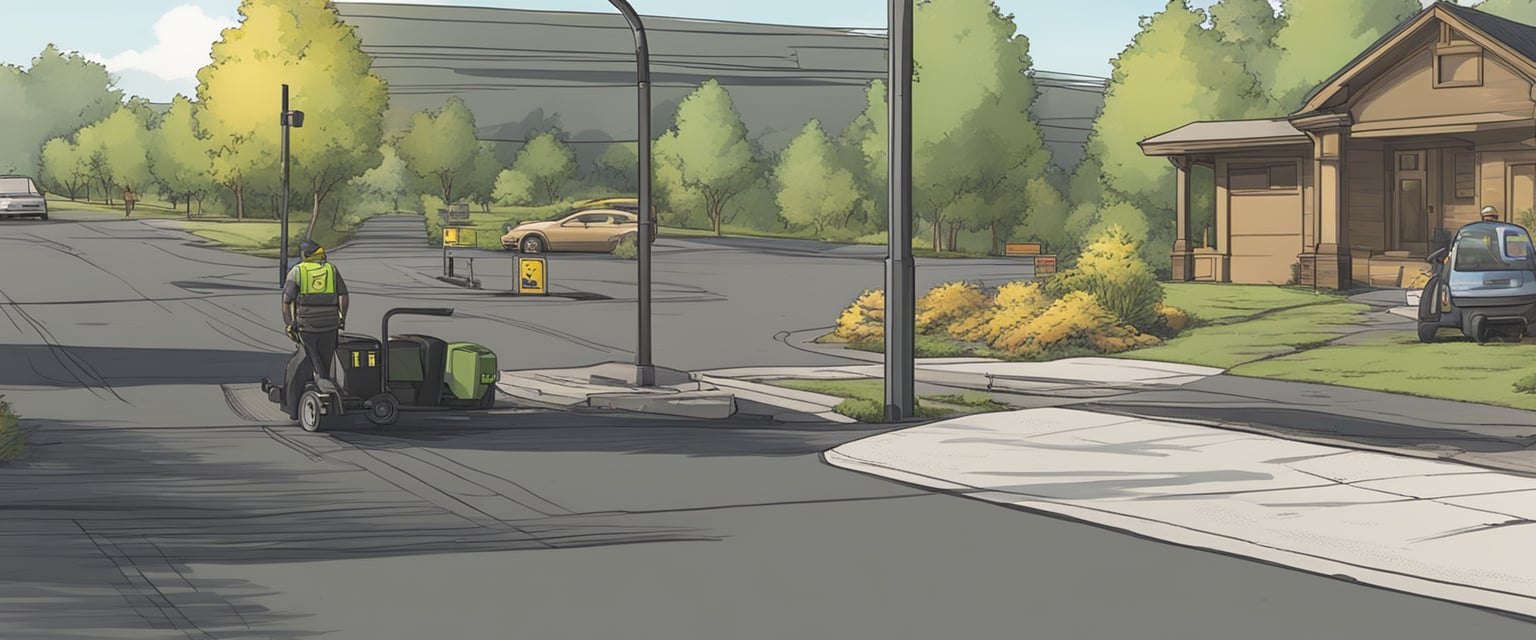Asphalt Resurfacing: Essential Tips for a Durable Surface
Asphalt resurfacing is a crucial process in maintaining the longevity and quality of paved surfaces, such as driveways, parking lots, and roads. By addressing wear and tear in a timely manner, it not only enhances the visual appeal but also ensures safety and functionality. Implementing regular resurfacing can significantly extend the lifespan of a paved area, providing a cost-effective solution for property owners and local businesses.
Professionals in the asphalt and paving industry specialize in performing these resurfacing tasks using advanced methods and high-quality materials. Companies, such as Asphalt and Paving: Anywhere in Central Texas, offer comprehensive services to repair and maintain asphalt surfaces in various regions. From small residential driveways to extensive commercial parking lots, these specialists are equipped with the necessary skills and tools to handle projects of any scale.
For a successful asphalt resurfacing project, it is essential to assess the existing surface’s condition to determine the appropriate techniques and solutions. Proper surface preparation, including cleaning and repairing any cracks or damage, is vital to ensure a seamless and durable outcome. Once the groundwork is completed, a new layer of asphalt is applied, restoring the surface and providing a smooth, safe driving experience for years to come.
Understanding Asphalt Resurfacing
Aspects of Asphalt Resurfacing
There are several factors to consider when undertaking asphalt resurfacing. One primary concern is the condition of the existing surface. It is crucial to identify any cracks or other damages to the asphalt before initiating the resurfacing process. Repairing these damages will help prolong the lifespan of the resurfaced surface.
Another vital aspect is the thickness of the new asphalt layer. The thickness will depend on various factors like the type of traffic the surface will experience, the climate in the area, and the quality of the underlying base. It’s essential to determine the appropriate thickness to ensure the resurfacing will enhance durability and reduce the need for frequent repairs.
Moreover, when resurfacing, it’s necessary to address water drainage around the area. Proper drainage prevents water from pooling on the asphalt surface, minimizing the risk of damage and contributing to long-lasting asphalt driveways.
Lastly, it’s important to choose an experienced contractor for your asphalt resurfacing project. A reliable contractor will possess the knowledge and expertise in determining the best resurfacing approach for your unique situation. For instance, they will be able to recommend an appropriate method in cases like Asphalt Resurfacing in College Station.
In conclusion, asphalt resurfacing is a critical process in maintaining and extending the life of asphalt driveways and other surfaces. When considering this option, it’s essential to address factors such as existing damages, proper thickness, and drainage to ensure a successful resurfacing project.
The Resurfacing Process
Preparation for Resurfacing
The first step in the asphalt resurfacing process involves thorough cleaning of the existing surface. This is essential to ensure that the new layer of asphalt adheres properly to the old surface. Professionals will often use power brooms or blowers to remove dirt, debris, and loose particles, followed by washing the surface with water if necessary. In cases where the pavement has small cracks, proper measures are taken to fill these cracks before proceeding. Proper asphalt repair in College Station can help maintain the longevity of the surface.
Performing the Resurfacing
Once the surface is clean and all cracks have been filled, the actual resurfacing process begins. A new layer of asphalt, called an overlay, is applied to the existing pavement. This overlay is typically a combination of hot asphalt mix and an appropriate binder material to ensure proper adhesion. The thickness of the overlay may vary depending on the specific requirements of the project, but it is generally between 1.5 to 2 inches.
After the overlay is applied, it is crucial to let it dry for a sufficient amount of time. The drying time may vary depending on the weather conditions and the thickness of the overlay, but it typically takes about 24 hours. Once the new layer has dried and set, the final step is to seal the driveway. This is done by applying a sealant material that helps protect the surface against water penetration, UV rays, and other damaging factors. Sealing the driveway not only prolongs its lifespan but also enhances its appearance.
By following this process, asphalt resurfacing provides a cost-effective and efficient solution for maintaining the integrity and appearance of your pavement. It is important to choose experienced professionals to perform this task, as they have the knowledge and expertise necessary to ensure a high-quality result.
Asphalt vs. Concrete Driveways
Asphalt and concrete are the two most common materials used for driveway construction. To decide which material is best for your driveway, it’s crucial to understand the differences and weigh the pros and cons of each.
Asphalt Driveways are typically less expensive than their concrete counterparts. Not only is the material itself less costly, but installation is often quicker and more efficient. Asphalt driveways can also be more resilient in colder climates, as they can flex under freezing temperatures without cracking. Furthermore, it’s easy to seal and repair asphalt when needed, making it a low-maintenance choice.
However, asphalt driveways tend to have a shorter lifespan, usually around 20 years, and require more frequent maintenance and resealing than concrete driveways. Additionally, asphalt is prone to staining and deterioration from oil and other chemicals.
Concrete Driveways offer a more substantial, long-lasting option compared to asphalt. With proper maintenance, a concrete driveway can last more than 30 years. While the initial cost of a concrete driveway is higher, it usually requires less routine maintenance. Concrete driveways offer various design options, such as staining, stamping, and forming, giving homeowners the ability to customize their driveway’s appearance.
On the downside, concrete driveways tend to be more challenging to install and may crack faster in colder climates due to their limited flexibility. Replacement or repair of a damaged concrete driveway can be more labor-intensive and expensive than asphalt.
Before deciding on a material for your driveway, consider factors such as your budget, climate, and personal design preferences. To help in making your decision, you can explore the similarities and differences between these materials in greater detail at Concrete or Asphalt?.
Cost Considerations
When it comes to asphalt resurfacing, one of the main aspects to consider is the cost. Generally, the cost of asphalt resurfacing varies, but it typically falls within the range of $2 to $5 per square foot. Knowing the cost per square foot and understanding the additional costs involved can help you make a more informed decision on whether it’s the right choice for your specific needs.
Calculating Costs per Square Foot
To calculate the cost of asphalt resurfacing per square foot, you need to consider the price of the asphalt material itself and the labor required for the resurfacing project. Typically, the asphalt material costs will account for a significant portion of the overall expense. By multiplying the costs with the area of your driveway or surface area, an estimated budget can be determined.
It’s essential to gather quotes from various contractors when considering a cost-effective asphalt resurfacing solution. Quotes can help you understand how the costs vary between different providers. For a more accurate estimation, you can Schedule Free Asphalt Paving Quote with a reputable contractor.
Additional Costs Involved
Apart from the standard asphalt material and labor costs, there may be additional expenses involved in an asphalt resurfacing project. These additional costs could include preparatory work before the resurfacing process, such as repairing any existing cracks, leveling the surface, or removing debris. Furthermore, there might be some charges for refinishing or restriping the asphalt area.
In some scenarios, you may also encounter permit fees, depending on your local regulations. Always stay informed about these additional costs when determining your budget for an asphalt resurfacing project, as they may significantly impact the overall expenses.
By understanding the cost considerations involved in asphalt resurfacing, and being aware of the factors that could affect the costs per square foot and additional expenses, you can make a well-informed decision that best suits your needs and budget.
Maintenance and Durability of Asphalt
Asphalt is a popular choice for many due to its affordability and ease of maintenance. To extend its lifespan and durability, proper maintenance is essential. This includes sealing, patching, and dealing with weather conditions.
Sealing
Sealcoating is an important aspect of asphalt maintenance. Applying a sealant every few years helps protect the surface from water penetration, oxidation, and chemical spills. The process involves applying a layer of specialized coating on top of the asphalt, which provides a barrier against harmful elements. This can significantly extend the lifespan of the pavement and maintain its attractive appearance. Asphalt Preventative Maintenance is a great way to ensure your asphalt remains in top condition for years to come.
Patching
Regularly inspecting the asphalt surface can help identify any cracks, potholes, or other forms of damage. Patching these promptly is crucial to prevent further deterioration. Ignoring these issues can lead to more extensive, and expensive, repairs down the line. In patching, damaged areas are cleaned, filled with new asphalt mix, and compacted to restore the surface’s integrity.
Dealing with Weather Conditions
Weather conditions can greatly impact the durability of asphalt pavement. In colder climates, the freeze-thaw cycle can cause cracks and other damages. Applying a sealant can help mitigate damage from these environmental factors. In addition, proper drainage should be incorporated in the pavement design, as standing water can weaken asphalt and lead to deterioration.
In conclusion, taking a proactive approach to asphalt maintenance, including sealing, patching, and dealing with weather conditions, can ensure your pavement’s longevity and maintain its optimal performance.
Professional Service Vs. DIY
When planning an asphalt resurfacing project, homeowners and business owners often weigh the pros and cons of choosing a professional service or undertaking a do-it-yourself (DIY) approach. Both options have their benefits and drawbacks, but it’s important to consider factors such as expertise, equipment, cost, and project complexity.
One key advantage of hiring a professional service is their specialized knowledge and experience. Professional concrete contractors in Texas offer a level of expertise that can be invaluable when determining the most appropriate methods for resurfacing a particular pavement. Their knowledge can lead to enhanced designs and plans, and ultimately, a higher quality outcome.
On the other hand, a DIY approach might initially appear more cost-effective. However, consider the potential challenges of taking on an asphalt resurfacing project without professional assistance. The necessary equipment, materials, and experience can be costly and time-consuming to obtain. And without professional guidance, the risk of errors or poor quality results increases.
Several factors can make the DIY approach more feasible, such as a small project scope, simple design choices, and a willingness to invest in the necessary tools and knowledge. But for larger or more complex projects, the benefits of enlisting professional assistance often outweigh the cost savings of going it alone.
Ultimately, each individual and project has unique requirements that should be considered when deciding between a professional service and a DIY approach to asphalt resurfacing. The key is to assess the needs, budget, and expectations to determine the best option for delivering a high-quality result that meets or exceeds those criteria.
Aesthetics and Functional Aspects
Improving Curb Appeal
One of the primary benefits of asphalt resurfacing is its enhancement of a property’s appearance. A well-maintained driveway, with smooth surfaces and clean lines, can significantly boost a property’s curb appeal and increase its value. With the right design in place, asphalt resurfacing can also improve accessibility and safety. For example, taking into account essential considerations for new driveway construction can minimize injuries to both residents and visitors.
Asphalt resurfacing is popular because of its exceptional versatility in design and the range of customization options available. Property owners can choose from an array of colors, textures, and patterns, tailoring the surface to complement a home or commercial building’s overall aesthetic. This adaptability, combined with the clean appearance asphalt offers, ensures a property’s curb appeal remains high and enhances the real estate value in the long run.
Handling Drainage
Drainage issues can create various problems within a property, such as puddles, soil erosion, and water damage to infrastructure. Asphalt resurfacing offers a practical solution to such challenges by addressing these drainage concerns. By installing strategically placed sloped surfaces, asphalt paving provides an efficient path for water runoff and directing it away from structures.
Incorporating permeable asphalt materials can also mitigate drainage problems. These porous materials allow rainwater to infiltrate the ground, thereby reducing the risk of water pooling and promoting a healthy ecosystem around the property. Ensuring proper drainage not only preserves the aesthetic value of the area but also helps maintain the condition and functionality of the asphalt surfaces.
Overall, asphalt resurfacing plays a significant role in both the appearance and functionality of a property, enhancing its curb appeal while addressing practical matters like drainage. By selecting the proper design and materials, property owners can maximize the benefits asphalt resurfacing provides.
Resurfacing Vs. Replacement
Asphalt resurfacing and replacement are two common methods for addressing worn or damaged pavement. Deciding between them depends on factors such as the severity of the damage, the age of the pavement, and the available budget.
Resurfacing involves adding a new layer of asphalt on top of the existing pavement. This method is suitable for minor to moderate wear, such as small cracks or surface-level damage. However, if the underlying foundation has more significant issues, resurfacing may only provide a temporary solution. The process is generally more cost-effective and less time-consuming than replacement while still extending the lifespan of the pavement.
On the other hand, asphalt replacement involves removing the entire pavement layer and installing a fresh one. This process is necessary when the damage extends to the foundation or when the pavement has reached the end of its service life. A complete replacement ensures a sturdy and durable surface for many years to come. Though more expensive and time-consuming, it addresses deeper issues and guarantees long-term performance.
One alternative for homeowners looking for a driveway material is a crushed asphalt driveway, which uses recycled asphalt. This eco-friendly option offers increased durability and can save on costs compared to traditional asphalt replacement.
In summary, asphalt resurfacing serves as a cost-effective method for dealing with minor surface damage or wear, while replacement is necessary for severe or deep damage. Choosing the best option depends on the specific conditions and requirements of the pavement in question.
Common Issues and Resolutions
Addressing Structural Damage
Structural damage to asphalt surfaces can be caused by various factors, such as ground movement, heavy traffic, or improper installation. This type of damage often appears as alligator cracks or potholes. To address these issues, it is essential to conduct a thorough assessment and identify the underlying cause of the problem.
In the case of alligator cracks, it is crucial to examine the affected area and determine the extent of the damage. Proper maintenance and Driveway Crack Repair in Texas can help mitigate further issues. For potholes, it is necessary to remove the damaged material, apply a suitable base, and then fill the pothole with fresh asphalt. This process ensures a smooth, durable surface that can withstand repeated use.
Fixing Surface Damage
Surface damage in asphalt surfaces can be attributed to several factors, including poor installation, exposure to harsh weather conditions, and everyday wear and tear. Typical signs of surface damage include small cracks, raveling, and fading. To address these issues, asphalt resurfacing can be an effective solution.
Asphalt resurfacing involves applying a new layer of asphalt over the existing surface, resulting in a fresh, revitalized appearance. This process not only rectifies the visible issues but also enhances the overall durability of the asphalt surface. It is crucial to implement proper maintenance practices to prolong the lifespan of the resurfaced area and prevent future damage.
By addressing both structural and surface damage in asphalt surfaces, property owners can maintain the quality and functionality of their paved areas. Through routine inspections and timely repairs, the asphalt surfaces will remain in good condition, ensuring longevity and satisfactory performance.
Frequently Asked Questions
How much does it cost to resurface an asphalt driveway?
The cost to resurface an asphalt driveway varies depending on the size and the current condition of the driveway. On average, homeowners can expect to pay between $1 to $3 per square foot. However, prices may increase if additional repairs or extensive prep work is needed.
What are the steps for DIY asphalt resurfacing?
DIY asphalt resurfacing can be a cost-effective option for homeowners. The steps include:
- Inspect and clean the driveway to remove debris, dirt, and vegetation.
- Repair any cracks and holes.
- Apply a driveway primer or tack coat to ensure proper bonding of the new layer of asphalt.
- Mix the resurfacing material according to the manufacturer’s instructions.
- Apply the resurfacing material in thin, even layers using a squeegee or specialized asphalt spreader.
- Compact the new layer using a roller or tamper.
- Allow the resurfaced driveway to dry and cure.
How long does it take for resurfaced asphalt to dry?
The drying time for resurfaced asphalt depends on the thickness of the application, temperature, and humidity. On average, it takes about 24 to 48 hours for the asphalt to dry and harden. However, it is recommended to wait at least 72 hours before allowing traffic on the resurfaced driveway.
What’s the difference between resurfacing and sealing?
Resurfacing involves adding a new layer of asphalt over the existing driveway to repair extensive damage and wear, while sealing is a protective measure that involves applying a sealant to the surface of the asphalt. Sealing helps to prevent water infiltration, oxidation, and damage from oil and gas spills. It is a maintenance approach to prolong the life of the driveway, whereas resurfacing addresses structural issues and restores the surface.
What are the best options for driveway resurfacing?
The best option for driveway resurfacing depends on the individual’s needs and preferences. Some options include:
- Asphalt resurfacing: Affordable and durable, asphalt resurfacing is a popular choice for homeowners.
- Concrete overlay: A concrete overlay provides a more robust and longer-lasting surface but can be more expensive than asphalt.
- Paver stones: Paver stones can be installed over the existing driveway for a visually appealing and low-maintenance option, but they are typically more expensive and time-consuming to install.
How long can I expect the resurfaced asphalt to last?
A properly resurfaced asphalt driveway can last anywhere from 10 to 20 years, depending on factors such as weather conditions, usage, and maintenance. Regular inspection and timely repairs, combined with sealing every two to five years, can help to extend the life of the resurfaced driveway.


